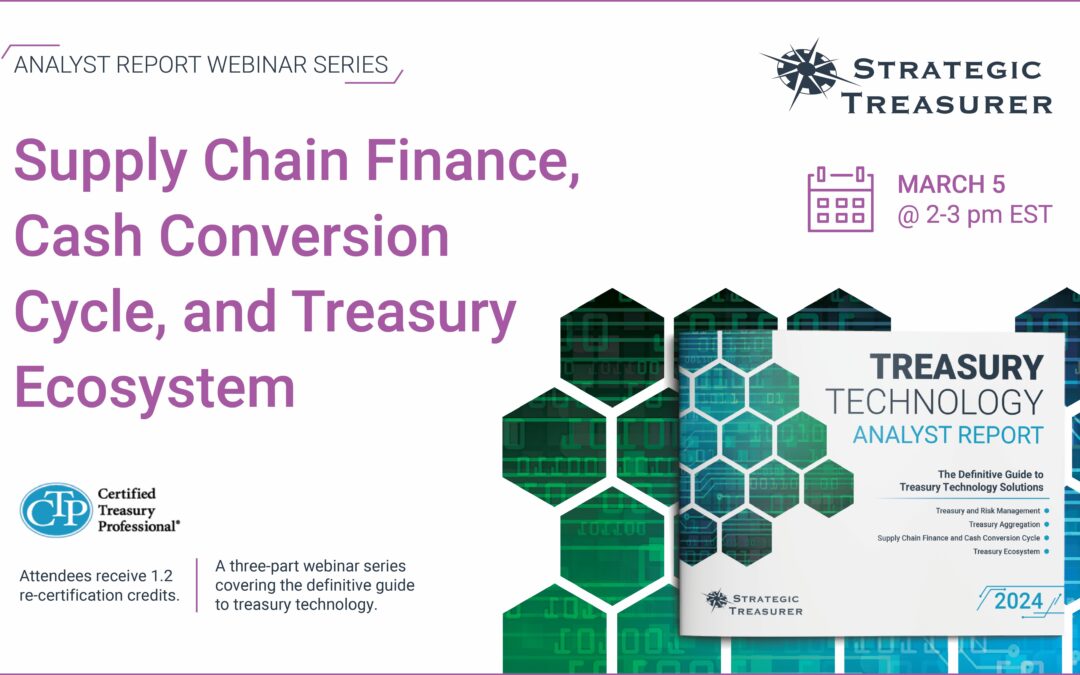
by Brian Weeks | Jan 31, 2025 | Replays, Webinars
Treasury’s interest in technology extends far beyond core cash management tools, and often, it extends beyond the walls of its own department. Solutions that impact working capital or that help with the broader ecosystem of liquidity management are important to treasury. This webinar covers supply chain finance (SCF) solutions, cash conversion cycle (CCC) automation solutions, and those that fall within the broader treasury ecosystem. Join us to learn how technology can help your company optimize working capital, how different SCF models work, and to discuss the range of tools available to improve efficiency in the CCC and to support treasury operations.
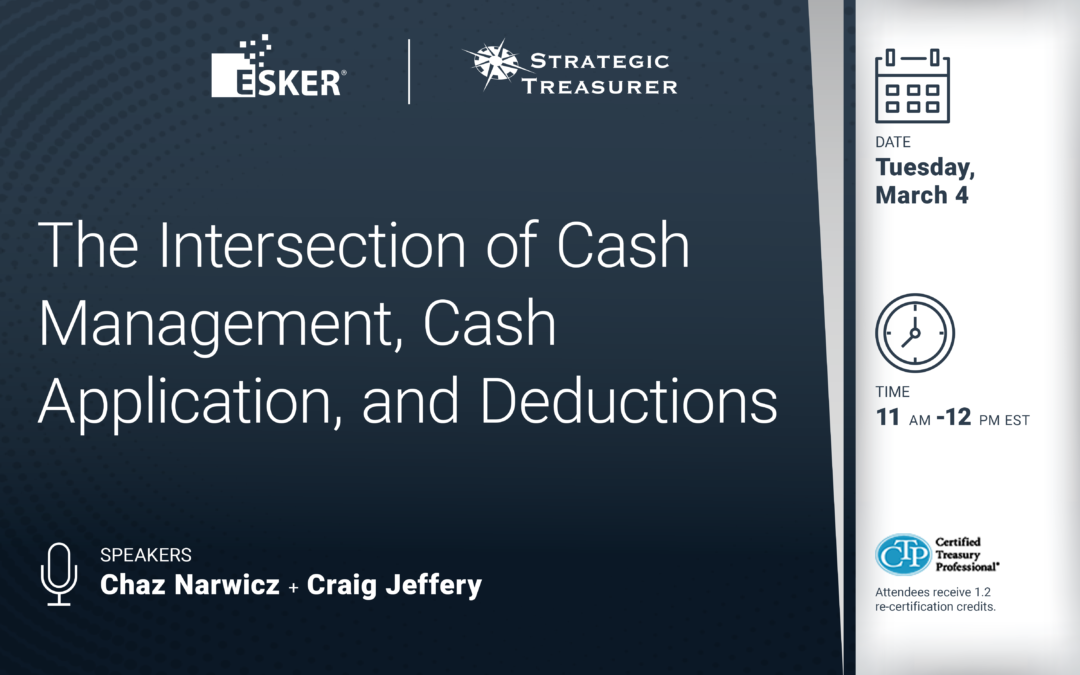
by Brian Weeks | Jan 30, 2025 | Replays, Webinars
Join Strategic Treasurer and Esker as we explore the integration of cash application and deductions solutions, along with the significant benefits they bring to treasury operations. We’ll dive into how these solutions complement each other to streamline processes, improve cash flow management, and reduce manual effort. Our expert speakers will demonstrate how pairing these technologies can enhance accuracy, speed up collections, and ensure a more efficient and effective working capital strategy. Don’t miss this opportunity to learn how to simplify and optimize your cash management practices.

by Brian Weeks | Jan 24, 2025 | Replays, Webinars
As more businesses and financial institutions look to expand and optimize their portfolios, they are seeking ways to better understand their customer base and to reach them more effectively. To accomplish this, many are choosing to offer their AP and AR solutions together. This webinar will explore the possibilities of automating both AP and AR in an intentional and integrated way. Topics addressed will include the difference between activation and implementation, the benefits of offering open and connected payment platforms, the industry trends supporting this transition, and how tailored solutions help you better serve your customers.
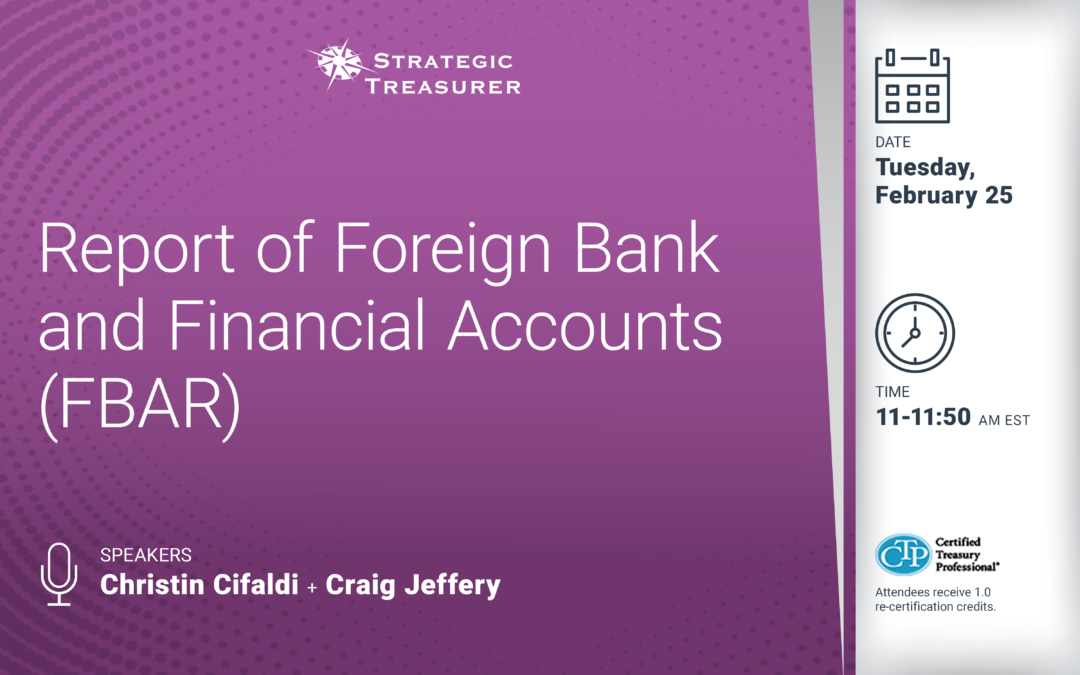
by Brian Weeks | Jan 24, 2025 | Replays, Webinars
Report of Foreign Bank and Financial Accounts (FBAR), from a corporate perspective, has two main filing requirements: corporate and individual. Employees with signing authority have a requirement to file, as does the organization. This session will move through the following: the purpose of FBAR; what entities and accounts are reportable; which individuals must file (even if they have no financial interest in the accounts); the filing process and methodologies; and fines and enforcement. Attendees will also understand all the hard deadlines and be provided with a working calendar of when certain activities should be started and completed to ensure success. By the end of this session, attendees will have a firm grasp of reporting obligations and the steps necessary to comply with the Financial Crimes Enforcement Network (FinCEN) regulations.
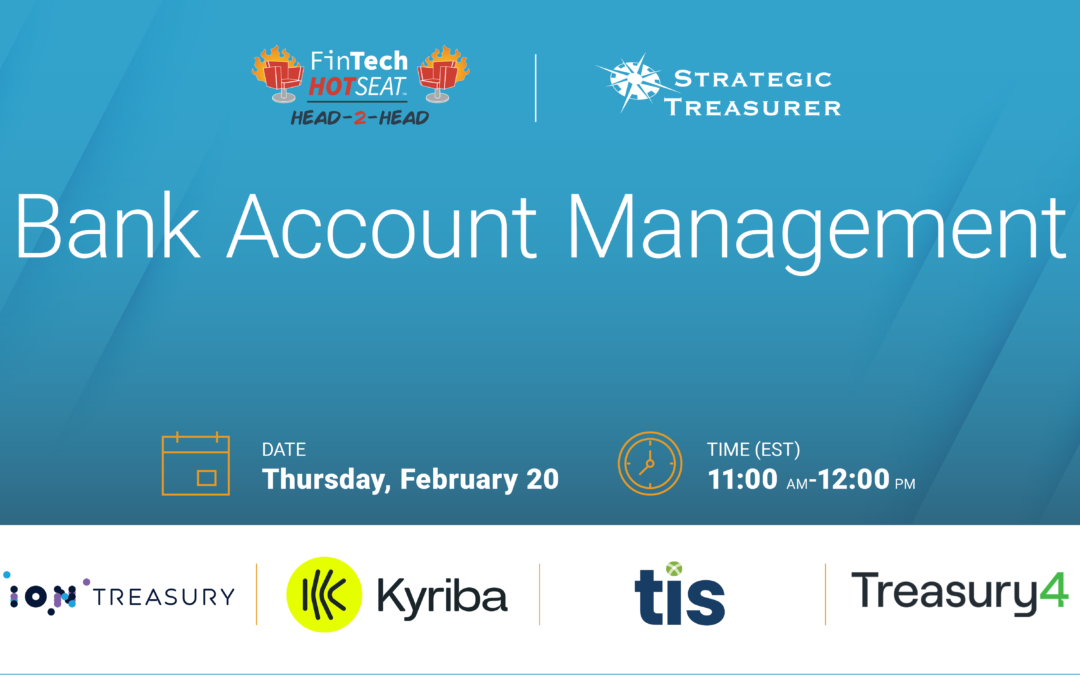
by Brian Weeks | Jan 22, 2025 | Fintech Hotseat Head-2-Head, Replay, Replays, Webinars
Join us for this insightful Head-2-Head event, where experts will demonstrate how their platforms help treasurers take control of their bank account structures. Discover how innovative solutions can simplify account governance, reduce operational risk, and improve decision-making. Don’t miss this opportunity to see how cutting-edge technology is transforming the way treasury teams manage and optimize their bank accounts globally.
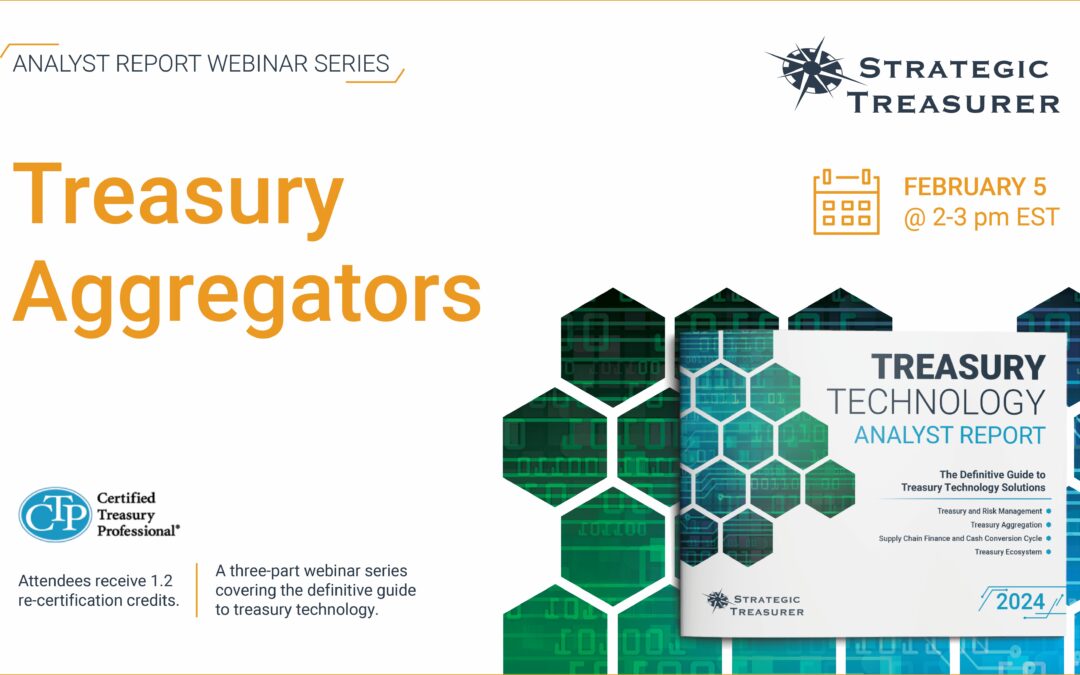
by Brian Weeks | Dec 23, 2024 | Replays, Webinars
Banking and payments data complexity can grow rapidly. Bank portals and manual processes become untenable quickly, and at a certain point of complexity, specialized tools become expedient. This webinar will discuss how a treasury aggregator (TA) can address these areas of complexity by automating time-consuming tasks and supporting efficient and controlled operations. Additional topics will include the role of a treasury aggregator within the larger treasury technology landscape, factors affecting the future of treasury aggregators, and leading practices for successfully implementing a TA.






